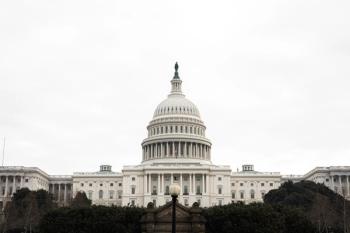
How Providence aims to make gains in diversity sustainable
Karen Ashley, chief diversity, equity and inclusion officer at Providence, talks about the importance of pacing efforts, listening and providing better patient care.
Three years ago, Karen Ashley joined the Providence health system.
But even before becoming Providence’s chief diversity, equity and inclusion officer, Ashley had spent many years in leadership roles working to improve diversity.
She says that she’s looking to make a lasting contribution.
“Being a woman of color myself, knowing that others have gone before me to pave the way for people who look like me to be in this industry and to do the work that I do, there is a spirit of reciprocity,” Ashey says.
“And the other part for me is the legacy, the legacy that I leave once I retire, or once I leave this Earth, to know that I have done work to help others along the way, is what it's all about for me.”
Since joining Providence, she’s tackled some big efforts, and she shares some of the work that she has done with Chief Healthcare Executive®. She talks about the importance of listening, building momentum with diversity, equity and inclusion, and also pacing those efforts.
“We also want this work also to be sustainable,” Ashley says. “We don't want it to be the flavor of the month. We don't want it to be what we're working on now. We want it to become the norm, where it just becomes ingrained into every decision, every level of the operation.”
The art of listening
Ashley helped craft the first comprehensive DEI strategy for Providence, which is no small feat for such a large health system. Providence operates 51 hospitals and more than 1,000 clinics in Washington state, Oregon, California, Montana, and Alaska. The system employs more than 122,000 people.
“We now have a unified approach,” Ashley says. “We have a road map to guide the work that we do and to track and to measure it along the way. And so I'm grateful. I'm grateful for where we are right now, and super proud, super proud, of what we've accomplished thus far.”
When Ashley took the post, she says she went on a listening tour across the system, which led to some valuable insights.
“I spent probably my first five or six months just on the road, visiting our different locations, our different geographic territories, meeting with our caregivers, to hear from them, what the state of diversity, equity and inclusion is here at Providence,” she says. “And so I will tell you that that laid the groundwork for where we are today, just having an opportunity to do that in-person assessment, if you will, paid huge dividends to helping us be where we are today.”
Even though Ashley was new to the system, Providence staff shared their thoughts candidly.
“They did not know me, so for them to be as vulnerable and transparent with me as they were was truly helpful,” she says.
Ashley recalls that some workers said they weren’t sure what Providence was trying to accomplish with its goals, and didn’t know what language to use with different generations in the workforce. Some simply needed more guidance on diversity, equity and inclusion.
Repeatedly, Ashley says workers shared that “they are excited about the work, they're motivated about the work, however, they need some help.”
‘Move at the right pace’
At Providence, much of the focus is on education for those in leadership roles, especially for those who do a lot of hiring.
“We are offering inclusive leadership for our leaders to make sure that they have the skills, the knowledge and the abilities that they need to lead inclusively,” Ashley says.
Providence has recently launched a pilot program in “reverse mentoring,” she says. In the program, senior executives are being mentored by junior-level executives who are of a different background. The executives are paired together for six months.
“We're not trying to boil the ocean,” Ashley says. “We're going to get those things down and get them down well, and then we'll move on to the next.”
And that ties into Ashley’s long-term goal of building sustainable success. She says it’s important to take steps that can be measured, but to also recognize that broader change may take some time.
“I try in every organization to make sure that everyone understands it is a journey,” Ashley says. “We can't move too fast, we can't move too slow. We have to move at the right pace, we have to make sure that we're working on the right initiatives.”
Ashley also says that a pragmatic approach helps build enduring progress and helps the morale of staff involved in diversity programs.
“It's maintaining that balance and leading the organization in such a way that we just do one to two, three, big things at a time,” Ashley says. “We get those behind us, and then we move on to what's next. That's one of the ways that I tried to make sure that I keep myself and my team in a healthy place and in a positive place. Let's just do a little bit at a time.”
By setting manageable goals, the system builds support and enthusiasm for other diversity initiatives, she says.
Ashley also touts the value of recognizing milestones.
“We want to make sure that we keep the momentum, that we maintain the passion and the excitement, and that we celebrate wins along the way,” Ashley says.
Leading to better care
With hospitals and clinics in California and Washington, Providence serves some very diverse communities. And she says that helps in the system’s efforts to attract employees and leaders from different backgrounds.
“It makes it somewhat easier that we do operate in some states that are very diverse, and some regions that are very diverse,” Ashley says.
Providence also operates in communities that aren’t as diverse, she notes. But she says those sites are also part of efforts to foster more diversity, equity and inclusion.
“We have operations that serve in areas that are not so diverse, so we have opportunities to do more educating around why the work is important and why we are remaining committed to the work,” Ashley says.
As Ashley explains, health systems need to focus on diversity, equity and inclusion as part of their mission to provide the best possible care to patients.
“We know that having a workforce that is representative of people from all different walks of life directly impacts the health outcomes that we're looking to achieve,” she says. “We also know that our patients are looking for clinicians, physicians, nurses, and staff who represent their backgrounds and their experiences. It just brings a level of comfort and trust.”
“That is one of the reasons why the work for us in this industry is so important,” Ashley continues. “As we have a workforce who appreciates and values the cultural differences and backgrounds of everyone, that is just going to translate into how we treat and serve our patients, all who come through our doors.”
So even though the journey continues, Ashley says she’s pleased with the system’s progress.
“I'm just super excited about where we are in this journey, and proud of Providence for staying the course,” she says.

















































